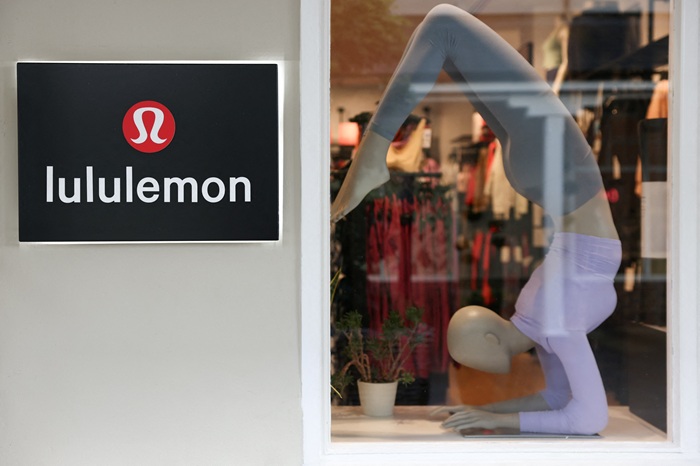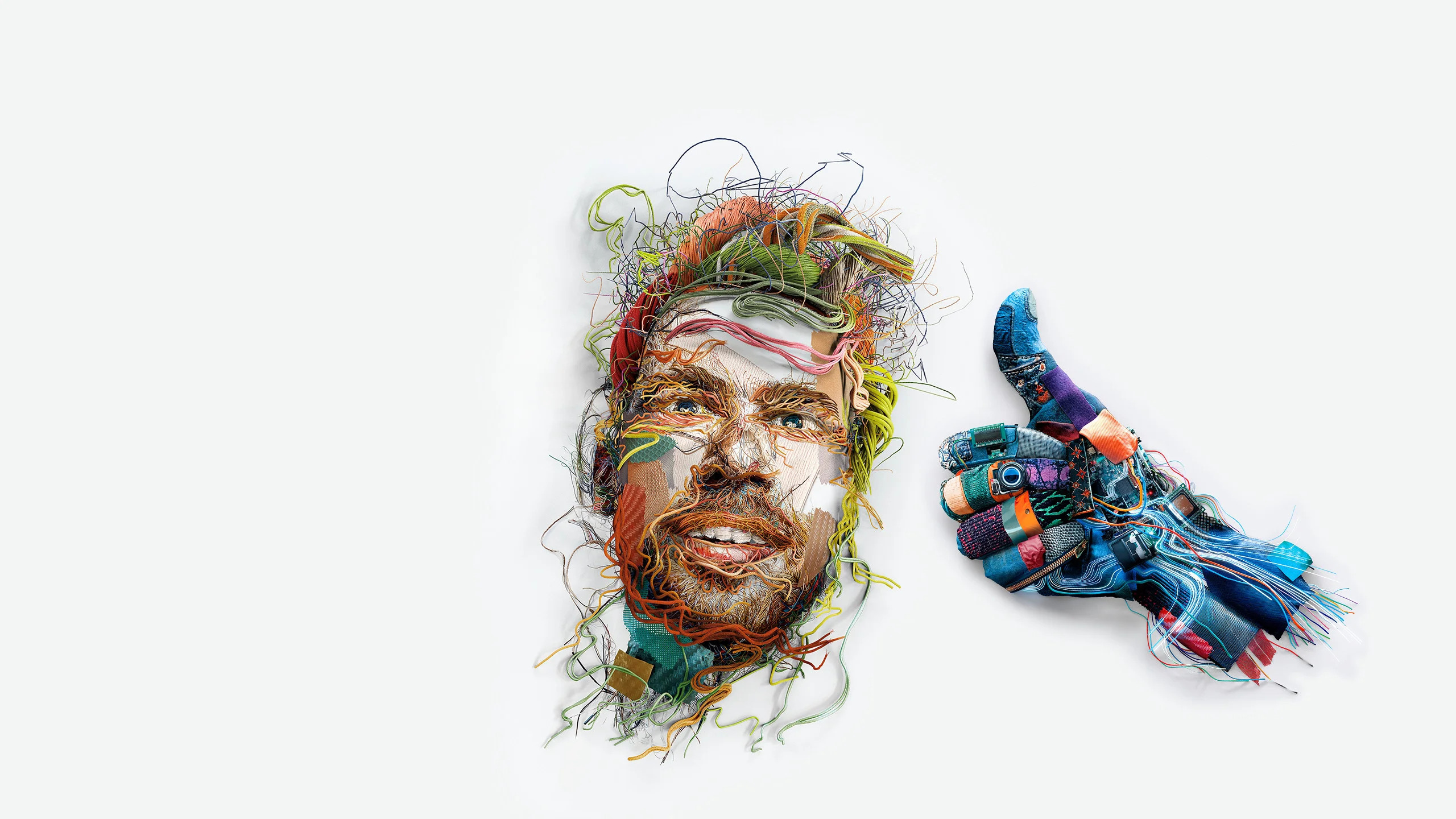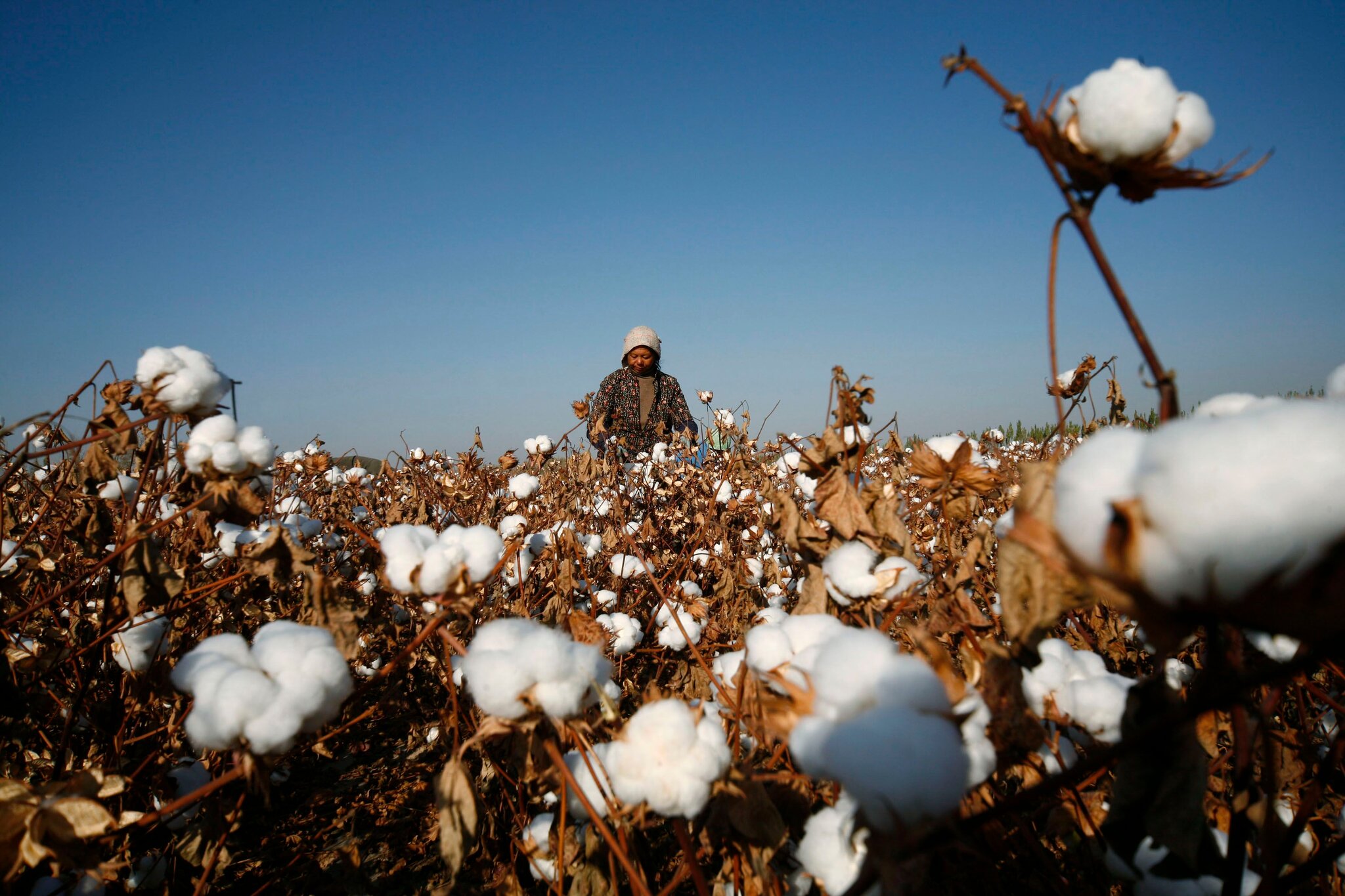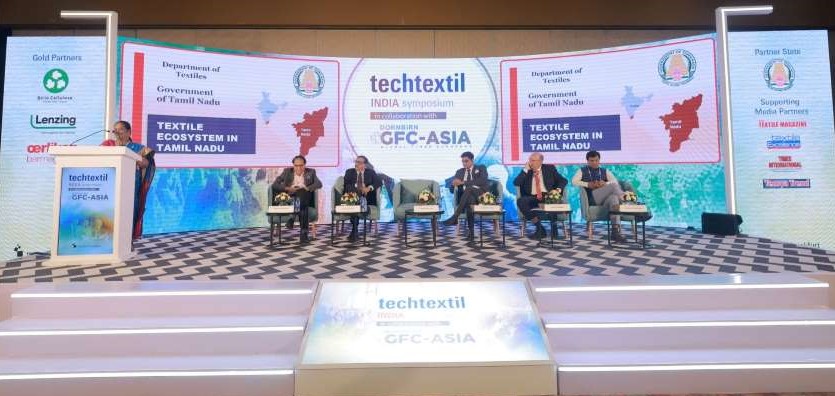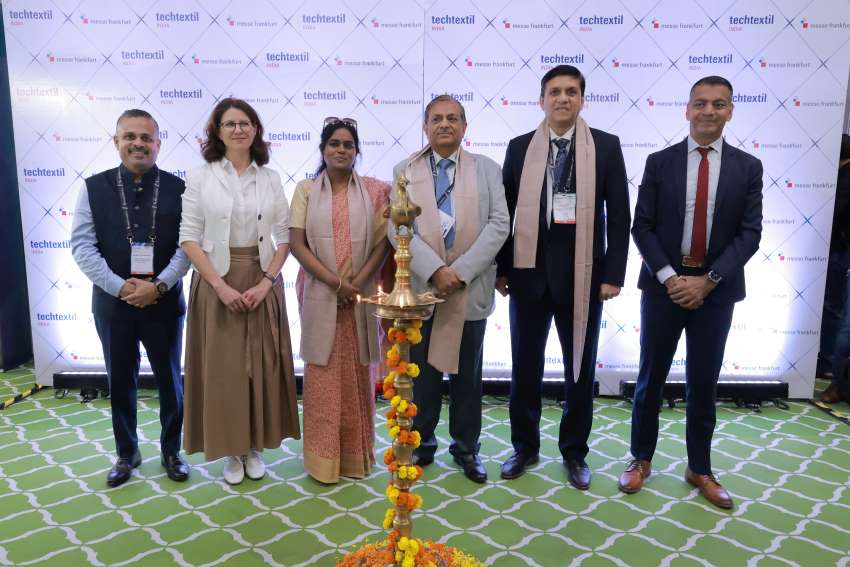FW
Marking a shift towards platform-based growth, leading supply chain solutions partner, Li & Fung has acquired UK-based hosiery, innerwear and loungewear specialist, Orrsum. This marks Li & Fung's first acquisition in over a decade and since its privatization in 2020, signaling a strategic shift towards platform-based growth.
Established in 1998, Orrsum is recognized for its extensive product expertise, agile development, and robust customer relationships, delivering over 50 million pairs of socks annually to more than 5,000 retail locations worldwide.
This acquisition helps Orrsum scale high-demand categories, expand its customer offers and drive faster and more flexible execution by combining the company’s category leadership and product development capabilities with Li & Fung’s digital infrastructure and global reach, states Destan Bezmen, President of LF Europe.
William Orr, CEO. Orrsum, adds, with the access to Li & Fung’s global platform and advanced technology, the company can expand its footprint, enhance service levels, and unlock new growth opportunities for customers and partners.
Orrsum will continue to operate under the leadership of William Orr as a part of LF Europe, ensuring a seamless integration. The company plans to leverage Li & Fung’s AI-enabled digital infrastructure and vast sourcing network across 40 economies to enhance supply chain agility, accelerate speed-to-market, and expand into new geographical regions and sales channels.
The collaboration between Li & Fung and Orrsum aims to scale category excellence, drive innovation, and deliver enhanced value within the increasingly complex global trade landscape.
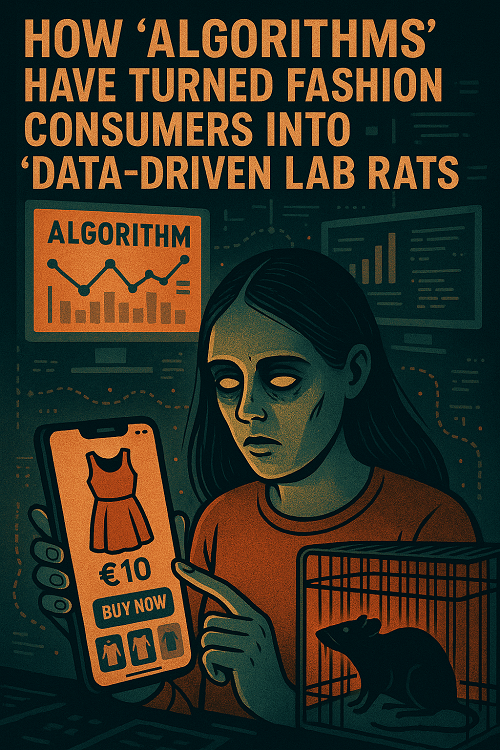
In the golden age of high street fashion, taste was seasonal, inspiration came from the runway, and consumers chose style over speed. Today, the opposite is true: the runway runs after the algorithm. The ultra-fast fashion economy, spearheaded by brands like SHEIN, Temu, and TikTokShop sellers, has quietly transformed consumers into test subjects in a behavioral experiment designed for infinite scrolling, impulse buying, and psychological capture.
This isn’t a fashion revolution—it’s algorithmic colonization.
The rise of the “Algorithmic Wardrobe”
Unlike traditional retail, which curated and sold collections based on forecasted trends, ultra-fast fashion is built on real-time feedback loops powered by artificial intelligence and machine learning. Every click, linger, scroll, return, and purchase becomes an input in a recommendation engine that tweaks what you see next. This is not personalization—this is manipulation at scale.
A user viewing a neon crop top at 3 a.m. in Marseille will find their entire feed reorganized by morning: hundreds of similar items, dozens of “timed” deals, and influencer hauls showing how to pair it with fast accessories. The cycle is endless, engineered to reduce friction, resist reflection, and reward impulsivity.
Data Snapshot: The consumption cost of “Cheap”
A recent ADEME-L'ObSoCo study in France revealed a stark contradiction: the supposedly economical ultra-fast fashion actually leads to higher annual spending and more buyer regret. Here's a quick breakdown:
|
Fashion Type |
Annual Clothing Budget (€) |
|
Prêt-à-Porter (Ready-to-Wear) |
330 |
|
Fast Fashion |
442 |
|
Ultra-Fast Fashion |
446 |
|
Hybrid / Influenced Mix |
613 – 810 |
Paradoxically, consumers buying “cheap” fashion spend up to 2.5x more annually than prêt-à-porter buyers, while amassing wardrobes with over 200 pieces, many of which go unworn.
The Invisible Cage: Behavioral design meets AI
What makes algorithmic consumption so powerful—and dangerous—is that it bypasses critical thinking. Every design feature is a trap:
● Endless scrolls and flash sales destroy decision-making windows.
● Gamified pricing (“Buy 2, get 15% off in the next 5 minutes!”) triggers loss aversion.
● Social proofing via influencers erases individual judgment.
● AI-generated content creates a constant illusion of relevance and scarcity.
This creates a kind of “auto-consumption” habit loop—what psychologists call cue-triggered behavior. But here, the cues are artificially planted, the triggers algorithmically sharpened, and the rewards fleeting.
Case Study: SHEIN and the 7-Day Feedback Loop
SHEIN, the Chinese fashion juggernaut valued at over $60 billion, is often cited as the blueprint for algorithm-driven fashion. Its backend operations rely on a 7-day design-to-shelf cycle, powered by an AI that processes billions of data points daily—from trending hashtags to video watch time, to geographic click-through rates.
According to Reuters, SHEIN adds 6,000+ new SKUs daily, using micro-batch production to test styles in limited quantities. Those that perform well are instantly scaled up. Those that don’t? Buried by the algorithm.
In this model, the consumer is the guinea pig and the product simultaneously. They don’t just buy the fashion—they train the AI.
Health and environmental fallout
Aside from the psychological traps, the physical implications are no less concerning. Fast fashion garments are frequently made from petrochemical-derived materials, often dyed with toxic substances that are banned or restricted in manufacturing, but find their way back through imports.
In France, 44% of consumers buying for their children monthly choose fast fashion—unknowingly putting their kids at risk of exposure to endocrine-disrupting chemicals and skin irritants.
Social Media: The ‘Trojan Horse’
Nearly 30% of French consumers follow fast fashion brands on social media, and over 60% of ultra-fast fashion customers admit their purchase volume increased after engaging with brand content. Influencer partnerships, AR filters, and micro-hauls flood attention spans with aspirational FOMO—Fear Of Missing Out—disguised as style advice.
Yet, as studies show, 48% of these consumers later regret their purchases, citing poor quality, size issues, and the realization of having too much.
The Road Ahead: Regulate the algorithm, not just the product
The current policy focus on sustainable materials and circularity is necessary, but insufficient. The real battlefield is the interface—the algorithmic storefront where decisions are silently shaped. Governments need to urgently address:
● Dark pattern regulations on shopping apps
● Algorithmic transparency in product recommendation systems
● Stricter import laws on chemical compliance in ultra-fast fashion
● Digital literacy education focused on consumption psychology
Until then, consumers will remain pawns in a digital dopamine casino, styled in polyester and marketed to by bots. Ultra-fast fashion isn’t just a business model—it’s a data-driven behavior machine. And consumers are no longer just buyers; they’re the trained responses to algorithms designed to extract maximum lifetime value. It's time we asked: In the age of algorithmic fashion, who is really dressing whom?
Swedish brand H&M Move is launching the new SoftMove pilates collection for Summer 2025 Season. Featuring clean-lined, feminine sets and accessories, this collection is specifically designed for sculpting and toning practices. It aims to offer gentle support, helping users cultivate strength, resilience, and a radiant glow.
Emphasizing slow, intentional workouts that promote a deep sense of well-being, the collection offers a feeling of calm confidence through designs created for optimal comfort and freedom of movement, both on and off the mat, during the high summer months.
Crafted with refined simplicity, the collection is made with the softest and lightest performance materials to keep customers cool even on the warmest days, says Marie Fredros, Head - Design at H&M Move. The range also includes training essentials, such as an insulated water bottle and ankle weights, that are easy to throw in our new mesh bag and go, she adds.
The collection includes a SoftMove bra in deep black with graceful, scallop-edge trims, reminiscent of a scallop shell. This can be perfectly paired with matching hotpants or flared leggings. The scallop-edge design also reappears on a yoga mat, adding an artful touch to the studio essential. Another notable piece is the twisted training bra in supple SoftMove fabric, designed to make an effortless statement on its own or layered under the new knot top or T-shirt.
The collection also introduces versatile sets of SoftMove bras and cycling shorts available in a timeless palette of black, clean white, grounding clay, and a vibrant hint of pistachio. These pieces can be seamlessly mixed and matched for a personalized look. The new pistachio hue is also featured on a spaghetti-strap playsuit, combining effortless chic with everyday ease.
Textile Exchange is set to launch the approved criteria for its groundbreaking Materials Matter Standard on December 12, 2025, marking a pivotal moment for sustainable practices within the global textile industry.
The Materials Matter Standard is a voluntary sustainability initiative designed to elevate the production and initial processing of raw materials used in textiles. It establishes a framework of best practices covering a wide range of materials, from agricultural origins to recycling facilities. The standard is specifically crafted to align with critical global objectives: supporting climate goals, upholding human rights, and championing animal welfare.
The official launch on December 12, 2025, will introduce the detailed criteria for the standard. Following this, organizations currently holding certifications under existing Textile Exchange standards will be able to request audits by approved certification bodies starting in 2026, once the new standard becomes effective. Mandatory compliance is anticipated to be phased in by 2027.
A hallmark of the Materials Matter Standard is its holistic approach. It seamlessly integrates crucial climate and nature outcomes with practices at the very beginning of the supply chain. This includes a strong emphasis on regenerative agriculture principles and responsible material sourcing, aiming for a comprehensive positive impact.
The introduction of the Materials Matter Standard signifies a significant shift towards a more unified and impactful strategy for sustainability in the textile sector. It is poised to incentivize practices that not only enhance material quality but also deliver substantial environmental and social benefits across the entire industry.
This new standard is central to Textile Exchange's overarching mission: to fundamentally transform how materials are produced, selected, and repurposed, ultimately benefiting both people and the planet. As the launch date approaches, Textile Exchange will provide further details on the implementation and transition processes to all stakeholders.
To be held from November 12–16, 2025 in Las Vegas, the debut edition of Vegas Fashion Week aims to elevate Las Vegas a global fashion destination. It will help establish fashion as a powerful force of culture, creativity, and commerce through a dynamic week of runway shows, citywide activations, and immersive experiences.
Presented by the Las Vegas Fashion Council, Vegas Fashion Week will feature a diverse program including fashion presentations and captivating live model showcases, educational talks and exciting design competitions, in-store activations, exclusive trunk shows, and VIP shopping experiences, and community engagement initiatives and vibrant entertainment.
The week-long event will bring together residents, visitors, and industry professionals in a citywide celebration of fashion, beauty, and innovation.
More than a celebration of style, Vegas Fashion Week is a statement about the power of fashion to shape culture, drive innovation, and build community, says Carrie Carter Cooper, Founder & Executive Director, Las Vegas Fashion Council.

The highly anticipated, 'Lyst! Inside Q1 2025’s Hottest Fashion Rankings' report has sent ripples through the industry, highlighting a market where luxury continues to evolve, and surprisingly, accessible fashion is making an unprecedented rise. Loewe has dethroned long-standing frontrunner Miu Miu, signalling a quarter of shake-ups driven by creative director changes, viral moments, and a growing consumer appetite for both high-end craftsmanship and affordable, on-trend pieces.
The Lyst Index, a quarterly barometer of fashion's hottest brands and products, analyzes the online shopping behavior of over 200 million people annually. Its methodology factors in search data (on and off-platform), product views, sales, and global social media mentions, activity, and engagement statistics across a three-month period.
Loewe's Ascent: A farewell propelled to the top
The biggest headline from Q1 2025 is undoubtedly Loewe's climb to the #1 spot, unseating Miu Miu, which had held the coveted position for the entirety of 2024. This rise from its previous Q4 2024 ranking (where it was #4) is largely attributed to the immense buzz surrounding Jonathan Anderson's impending departure as creative director. Shoppers flocked to Lyst, with searches for the brand spiking by 38 per cent, eager to acquire pieces from his final collections. This phenomenon underscores the powerful influence of a designer's legacy and the desire of consumers to own a piece of fashion history.
Fashion analyst say Jonathan Anderson's departure created a palpable sense of urgency and collectability around Loewe. It's a testament to his transformative 11-year tenure, which not only elevated the brand's profile but also cemented its status as a cultural powerhouse.
Miu Miu and Prada's slide, a minor rebalancing
While Loewe celebrated its victory, Miu Miu, after a dominant 2024, dropped to second place. Its sister brand, Prada, also saw a slight dip, falling two spots to fifth. This shift isn't necessarily a sign of decline for the Prada Group, but rather a reflection of Loewe's exceptional quarter and the overall dynamism of the luxury market. Miu Miu continues to command a strong following, particularly among Gen Z, largely because of its playful aesthetic and viral moments.
Mass market makes its mark
Perhaps the most groundbreaking development in the Q1 2025 report is the unprecedented entry of mass-fashion labels into the top rankings. This signifies a broadening of the fashion landscape, where ‘hottest’ is no longer solely synonymous with high luxury.
COS, the H&M Group's premium sub-brand, made history by rising 11 places to become the world's sixth hottest brand. This marks the first time a mass-fashion label has broken into the Lyst Index's Top 10. COS reported a remarkable 44 per cent quarter-over-quarter increase in demand, largely driven by viral products like its ‘barrel leg pants’, which also became the quarter's sixth hottest product.
Adding to this accessible wave, running brand On entered the Lyst Index for the first time, landing in 18th place, with searches up 50 per cent for the quarter. Even more striking, Uniqlo's color socks, priced at a modest $3.90, were the eighth hottest product of the quarter, becoming the most affordable product ever to feature on the Lyst Index's hottest products list. This highlights a consumer trend towards value and everyday essentials gaining traction alongside aspirational luxury.
Table: Lyst rankings and the change
|
Rank (Q1 2025) |
Brand |
Rank (Q4 2024) |
Change |
Reasons for change (Q1 2025) |
|
1 |
Loewe |
4 |
+3 |
Jonathan Anderson's impending departure; demand for his final collections; "Crafted World" exhibit. |
|
2 |
Miu Miu |
1 |
-1 |
Dethroned by Loewe's exceptional quarter. |
|
3 |
Saint Laurent |
2 |
-1 |
Shift in top rankings. |
|
4 |
Coach |
5 |
+1 |
Continued strong performance; accessible price point. |
|
5 |
Prada |
3 |
-2 |
Shift in top rankings. |
|
6 |
COS |
New Entry |
+11 |
First time in Top 10 for a mass-fashion brand; 44% demand increase; viral products. |
|
7 |
Bottega Veneta |
6 |
-1 |
Slight dip amidst overall market shifts. |
|
8 |
The Row |
8 |
0 |
Consistent performance in quiet luxury segment. |
|
9 |
Chloé |
New Entry |
+9 |
Chemena Kamali's return as creative director revitalizing the brand's boho aesthetic. |
|
10 |
Alaïa |
10 |
0 |
Consistent performance. |
|
13 |
Versace |
14 |
+1 |
Slight upward movement after leadership changes. |
|
14 |
Balenciaga |
15 |
+1 |
Slight upward movement. |
|
17 |
Gucci |
12 |
-5 |
Significant drop, potentially due to ongoing creative recalibration. |
|
18 |
On |
New Entry |
New |
First time in Top 20; 50% increase in searches; "Swiss engineering meets style" appeal. |
|
20 |
Valentino |
16 |
-4 |
Drop in rankings. |
Note: Rankings for brands not listed in both Q4 2024 and Q1 2025 might be outside the top 20 or have not been specifically highlighted in available reports.
Hottest products of Q1 2025
The hottest products list also saw some interesting shifts, influenced celebrity endorsements and emerging micro-trends:
Table: Lyst list of hottest fashion products
|
Rank (Q1 2025) |
Product |
Key driver |
Search increase (QoQ) |
|
1 |
Celine Marco Jeans |
Worn by Kendrick Lamar at the 2025 Super Bowl; immediately sold out. |
412% (for "flared jeans") |
|
2 |
Adidas Taekwondo sneaker |
Revival of a 25-year-old silhouette; low-profile shape trending. |
N/A |
|
3 |
Puma Speedcat Ballet sneaker |
Metallic sneaker-ballerina hybrid; defining a new footwear category. |
1300% (for "ballet sneakers") |
|
6 |
COS Barrel Leg Pants |
Viral popularity; contributing to COS's rise. |
N/A |
|
8 |
Uniqlo Color Socks |
Most affordable product in Lyst Index history; focus on practical essentials. |
N/A |
|
9 |
Paraboot Michael shoe |
80-year-old lug-soled silhouette; searches up 226% YoY. |
N/A |
|
10 |
Chloé Mini Ruffled Dress |
Boosted by Chemena Kamali's new vision for Chloé. |
N/A |
Luxury’s changing narrative
The Q1 2025 Lyst Index underscores a fascinating evolution within the fashion industry. While designer changes and runway moments continue to generate buzz, the report highlights that ‘heat’ is increasingly being influenced by numerous factors such as:
Designer transitions: The anticipation and emotional connection surrounding creative director changes, as seen with Loewe and Jonathan Anderson, can directly translate into consumer demand.
The power of celebrity: A single, high-profile endorsement, like Kendrick Lamar wearing Celine jeans, can create an immediate, widespread frenzy and sell-out products.
Accessibility and value: The strong performance of brands like COS, On, and Uniqlo signifies a growing consumer desire for stylish, well-made, and affordable options that seamlessly integrate into everyday wardrobes. This challenges the traditional notion of luxury exclusivity.
Enduring silhouettes and retro revivals: The popularity of the Adidas Taekwondo sneaker and Paraboot Michael shoe demonstrates that timeless designs and nostalgic trends continue to resonate deeply with consumers.
Micro-trends and niche categories: The surge in "ballet sneaker" searches indicates the rapid emergence of new, highly specific fashion trends driven by social media and early adopters.
As the fashion world continues its rapid pace, the Lyst Index Q1 2025 serves as a crucial compass, illustrating that while luxury houses will always hold sway, the definition of "hottest" is becoming more diverse, democratic, and responsive to immediate cultural moments and evolving consumer desires. The industry watches with bated breath to see how these trends will further unfold in the coming quarters.
RMG exports by India's prominent knitwear hub, Tiruppur increased by 12 per cent to Rs 12, 193 crore in Q1, FY26 spanning April-June 2025-26.
Highlighting this growth as a clear indicator of the sector’s ongoing recovery, A Sakthivel, Vice-Chairman, AEPC states, such consistent performance amid global economic challenges and fluctuating demand underscores India's sustained competitiveness in the international apparel market.
This impressive growth in Tiruppur's RMG exports comes at a time when India's overall textile exports registered a slight degrowth of 0.94 per cent during Q1 FY26, though apparel exports increased by 8.91 per cent. Tiruppur's strong performance is a testament to focused efforts, including policy advocacy, market intelligence, and capacity-building initiatives, which Sakthivel believes. will fuel continued growth in the future.
The primary markets for Tiruppur's RMGs continue to be the UK, EU, and the US, with Australia showing promising signs of increased demand.
A significant development that could further benefit Tiruppur's exports is the recent 35 per cent tariff imposed by the US on Bangladeshi textile imports, effective August 1, 2025. Sakthivel hopes, they will have to pay lesser duties than Bangladesh. This sentiment is echoed across the Indian textile industry, with many expecting a shift in sourcing preferences from Bangladesh to India, potentially boosting India's market share in the crucial American market. Indian textile stocks have already seen a surge in anticipation of this shift.
Coupled with strategic efforts and favorable external factors, this positive outlook positions Tiruppur's garment export sector for sustained expansion in the coming fiscal year.
Valued at $5.89 billion in 2024, the global spinning machinery market is projected to expand to $9.78 billion by 2034. As per a report by Precedence Research, the market is likely to grow at a CAGR of 5.20 per cent from 2025-34, indicating a robust expansion phase for the industry.
Having held the largest market share in 2024, the Asia Pacific region is expected to maintain its leading position and growth trajectory throughout the forecast period.
In 2024, the ring spinning machine segment accounted for the largest share in the global spinning machinery market. However, in future, the air-jet spinning machine segment is anticipated to experience the fastest CAGR during the projection period, suggesting a shift towards more advanced technologies.
The automatic segment dominated in 2024 and is forecast to retain its leading position, highlighting the industry's increasing reliance on automation.
Natural fibers held the largest market share by material type in 2024. However, the blended fibers segment is expected to grow at the fastest CAGR in the upcoming period, indicating a rising demand for composite textile materials.
The apparel and fashion segment captured the largest market share in 2024, reflecting its foundational role in the textile industry. Conversely, the industrial textiles segment is projected to witness the fastest growth between 2025 and 2034, signaling expanding applications beyond traditional clothing.
In 2024, largest share in the market was held by short staple spinning, However, during the forecast period, the long staple spinning segment is poised for the fastest growth, suggesting increasing demand for finer and longer fiber processing.
The online channels segment is expected to expand at the fastest CAGR between 2025 and 2034, underscoring the growing importance of digital sales platforms in the machinery market.
These trends collectively point to a dynamic and evolving global spinning machinery market driven by automation, diversification of material use, growth in specialized textile applications, and the increasing influence of digital sales channels.
New tariffs imposed by President Donald Trump are likely to shake up the global garment industry, creating both winners and losers, with India poised to emerge as a key beneficiary, according to a recent report by the State Bank of India (SBI). The report suggests, India stands to gain a significant advantage over competitors like Cambodia.
The SBI report highlights, India, which currently accounts for 6 per cent of the US apparel import market, could see substantial benefits by capturing an additional 5 per cent share from rival countries. This potential increase could translate into a 0.1 per cent addition to India’s GDP, the report estimates.
India's strong position is attributed to its Revealed Comparative Advantage (RCA) in textiles, particularly its existing exports of apparel and accessories to the US. The report notes, major garment and textile exporting nations, including Bangladesh, Cambodia, and Indonesia, are now at a disadvantage due to the alterations in the US tariff structure. According to the SBI, this scenario presents ‘the perfect time for India to gain a share in the global garments export market.’
The report concludes, India should proactively leverage this shift in trade dynamics to expand its export presence, especially in garment and textile categories where it holds a comparative advantage. By capitalizing on these emerging opportunities, India can not only boost its exports but also drive incremental growth in its economy, the report states.
India's garments and textiles sector is a vital contributor to its economy, valued at over $180 billion last year. It's also one of the country's largest employers after agriculture, providing jobs for over 45 million people. The sector is projected to reach an impressive $387.3 billion by 2028, demonstrating a CAGR of nearly 15 per cent.
Set to return from September 16-18, 2025, at Paris Nord Villepinte, the upcoming editon of Première Vision Paris will be dedicated to innovation and technology. This strategic repositioning is aimed at meeting the evolving demands of a fashion industry constantly seeking future-forward solutions.
This edition will attract over 1,000 exhibitors with 12 per cent participating for the first time, , underscoring the event’s pivotal role in the global fashion ecosystem. Florence Rousson, Chairperson, Executive Board, Première Vision and CEO - Fashion Division, GL events, emphasizes, Première Vision Paris’ return to its historical calendar and the ambitious programming of this edition reflect the ongoing changes aimed at better meeting the strong expectations of brands and manufacturers. The event will provide inspiration, networking, vision, and business solutions, proudly supporting a ‘resolutely innovative and responsible’ future for fashion, she notes.
The September edition will feature expanded and enhanced spaces designed to maximize information and opportunities. It will include a new Prospective Area focusing on beauty, thinking, guiding creative exploration and offering a holistic view of major industry shifts. This immersive space will highlight ‘Connections’ between industry and innovation, materials and beauty, and technology and emotion.
The event will also introduce six new themed Focus areas, each dedicated to a specific segment of the fashion industry, and extend its inspiration to the beauty sector through activations and the Prospective Area. A new Talks Stage focused on Fashion and Beauty will further enrich the conference program.
To facilitate connections and growth, Première Vision Paris is implementing new tools, including 150 Hosted Guests guided through customized journeys, pre-arranged business meetings to foster collaborations, six thematic walkthroughs to navigate the show efficiently, the Première Vision App for personalized planning and networking.
For the first time, Première Vision Paris will host 10 finalist startups from the ANDAM Innovation Award in a dedicated ‘Innovation & Technology’ area. Including 2025 winner Losanje and Special Jury Prize recipient Goldeneye Smart Vision, these startups are developing groundbreaking tech solutions for a more human and planet-friendly fashion ecosystem. Nathalie Dufour, Founder, ANDAM, highlighted on ‘the courage and vision of young entrepreneurs engaged in reinventing the industry.’
Additionally, a major player in the 3D fashion ecosystem, CLO Virtual Fashion will make its debut at Première Vision Paris with an exclusive 250 sq m immersive experience. Located near the Smart Creation area, CLO will showcase digitalized, eco-design, and 3D simulation solutions. The event will also feature an additional Talks Stage and two Pitch Stages, with expert speakers discussing innovation, technology, and fashion business from four key perspectives, including ‘Innovation & Technology for 2030.’


